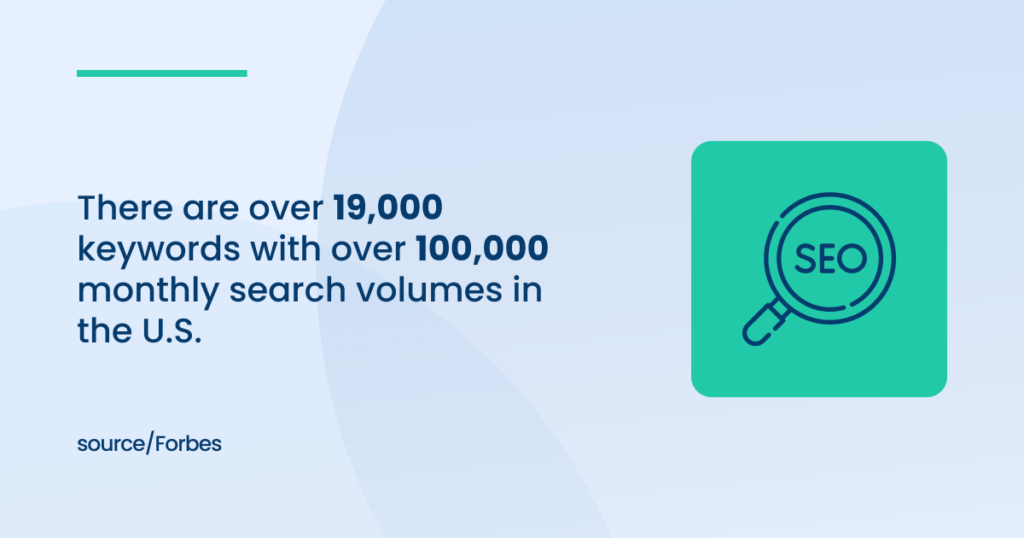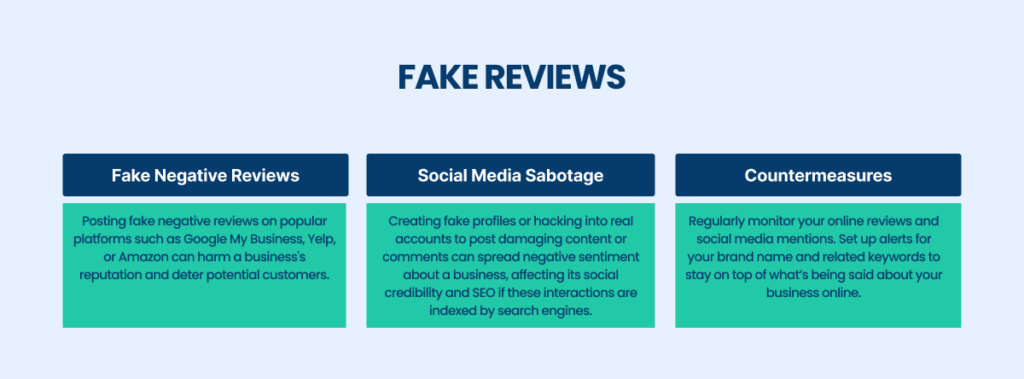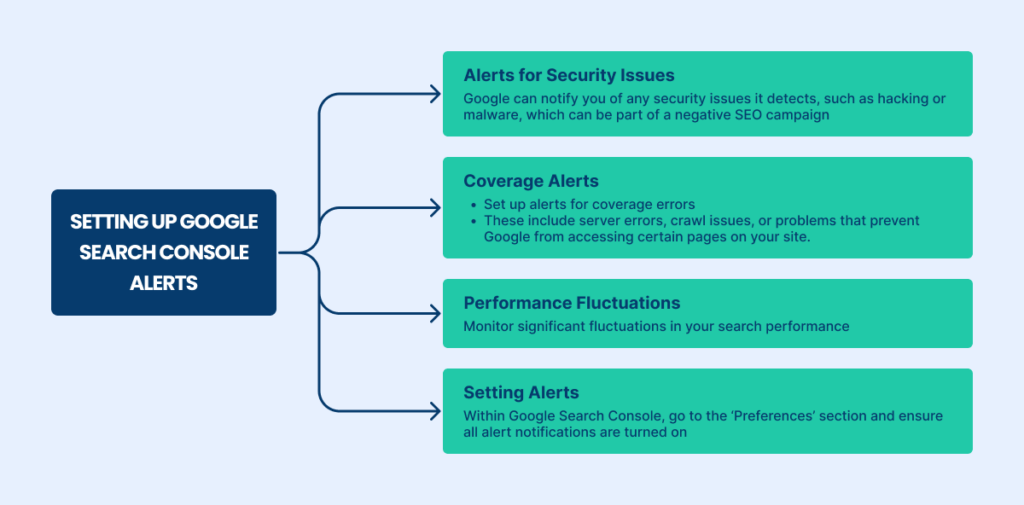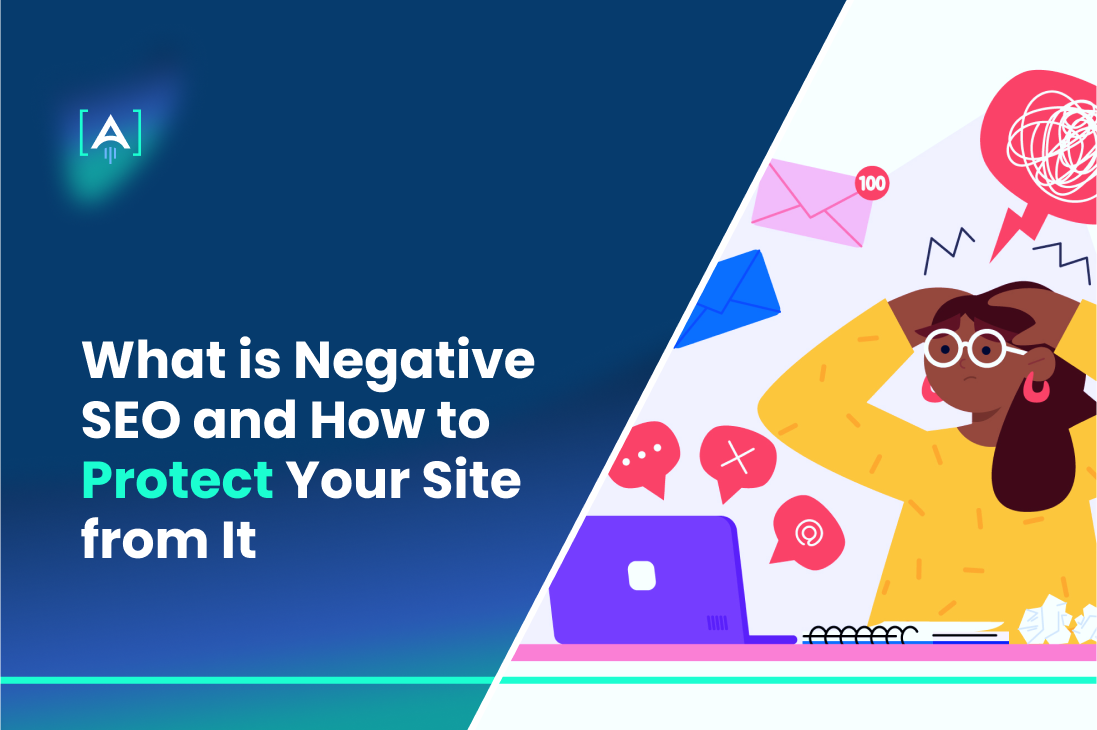Have you ever felt like someone is sabotaging your hard work online?
In the competitive world of SEO, there’s a dark tactic called negative SEO, where competitors try to bury your website in search results. It’s like someone messing with the goalposts while you’re playing your best game.
Forbes states that 14.1% of all keywords are phrased as a question. Moreover, using relevant keywords in the content can build trust and draw in highly relevant traffic.

While choosing keywords, the representative should be attentive to avoid making a wrong impression. Accordingly, negative SEO can involve planting bad links, stealing your content, or even blasting you with fake negative reviews.
Each SEO Agency has its strategies to tackle that.
The blog post will define what is negative SEO and how to protect your site from it.
Definition of Negative SEO
Considering the right keywords’ targeting, the main words searched on Google were the names of the applications.
Source: The Most Searched Keywords, Statista
If you are thinking how to choose the keywords, along with that there is the term of negative Seo. Many beginner marketers often ask, ‘what is negative keywords in SEO,’ not realizing the importance of filtering out irrelevant traffic to improve campaign efficiency and reduce costs.
Negative SEO is using black hat and unethical techniques to sabotage a competitor’s rankings in search engines.
While SEO (Search Engine Optimization) aims to improve a site’s visibility and ranking through legitimate means, negative SEO seeks to damage a rival’s SEO efforts, often through underhanded and malicious tactics.
Source: Semrush
This can involve a variety of actions designed to cause harm to the target’s search engine standing, making it an important concern for businesses in various industries, including e-commerce SEO, fintech SEO, HVAC SEO, SaaS SEO, and law firm SEO.
Common Misconceptions and Clarifications
Misconception 1: Negative SEO is a Rare Occurrence
Many believe negative SEO is rare and only used by the most unethical competitors.
However, the reality is quite different. As SEO becomes more competitive, negative SEO attacks have become more frequent.
Industries with high stakes and intense competition, such as e-commerce and law firm SEO, can be particularly vulnerable to these attacks as businesses vie for top positions in search results.
Clarification: Negative SEO is more common than many assume, especially in highly competitive industries. Businesses must stay vigilant and protect themselves against potential attacks.
Misconception 2: Negative SEO Only Involves Spammy Backlinks
A common understanding is that negative SEO merely involves creating spammy backlinks aimed at a competitor’s site. While link-based attacks are a prevalent form of negative SEO, they are not the only tactic used.
Clarification: Negative SEO tactics can also include hacking into websites to create technical chaos, posting fake negative reviews to harm a business’s reputation, or scraping and duplicating content to dilute its value. Each method can severely impact the target’s SEO performance and overall business credibility.
Misconception 3: Negative SEO is Easily Detectable and Reversible
Some believe that if their website becomes a target of a negative SEO campaign, it will be easy to detect and reverse the damage. Unfortunately, detecting and rectifying the effects of negative SEO can be complex and time-consuming.
Clarification: Successful identification and mitigation of negative SEO require regular monitoring of your SEO health, including backlinks and site traffic analytics.
Tools like Google Search Console can alert website owners to potentially malicious spikes in backlink numbers or strange patterns in website traffic.
However, reversing the damage often requires a more nuanced approach, including disavowing harmful backlinks and sometimes legal action against content theft.
Misconception 4: Google Penalizes Sites Under Negative SEO Automatically
There’s a misconception that search engines like Google can automatically penalize a site under attack by negative SEO without human intervention or appeal.
Clarification: While Google has sophisticated algorithms to detect foul play, they are not foolproof. Google also provides tools such as the Disavow Tool, which allows webmasters to point out links they feel may harm their site’s ranking.
However, the search engine does not automatically penalize a site; it offers a means to mitigate potential damage by allowing webmasters to take action.
Misconception 5: Negative SEO is Only a Problem for Big Businesses
Small to medium businesses often think they’re too small to be targets of negative SEO. This complacency can leave them vulnerable to attacks.
Clarification: Negative SEO can affect businesses of all sizes. In fact, smaller businesses might be even more vulnerable, as they typically have fewer resources to dedicate to monitoring and defending against such attacks.
Whether it’s a local HVAC company or a burgeoning fintech startup, no entity is too small to be hit by these tactics.
Methods of Negative SEO
For those just starting out with pay-per-click advertising, understanding what negative keywords in SEO are is vital for cost-effective campaigns. Negative SEO encompasses a variety of tactics used to harm a competitor’s search engine rankings.
This kind of SEO warfare can be particularly detrimental in competitive fields such as B2B SEO, where high search engine rankings are crucial for business success.
Understanding these methods is the first step in protecting your website from negative SEO attacks. Here’s an in-depth look at some common tactics:
Link-Based Attacks
Many online tutorials for beginners include a section on “what is negative keywords in SEO” because understanding this concept is crucial for effective search engine marketing.
Link-building is part of that. Link-based attacks are one of the most common forms of negative SEO. This method involves creating many spammy links pointing to a competitor’s website.
The goal is to manipulate search engine algorithms by linking from low-quality or irrelevant sites, thereby suggesting that the target site is also low-quality or engages in black hat SEO practices.
- Creating Spammy Links: Perpetrators might use automated tools to generate links from directories, comments, and forums with low moderation. These links often use exact-match anchor text that is overly optimized, which can trigger search engine penalties.
- Using Link Farms: A link farm is a group of interconnected websites set up to create backlinks to other sites. When identified by search engines, these farms pass very little value and can negatively affect the linked site’s ranking.
- Impact on Search Engine Rankings: When a website suddenly acquires many low-quality backlinks, search engines like Google might interpret this as a sign of manipulative practices, leading to a drop in rankings or even a manual penalty.
Protection Strategies: Regular monitoring of your backlink profile is essential. Tools like Google Search Console, Ahrefs, or SEMrush can alert you to unusual increases in backlink numbers. If suspicious activity is detected, consider using Google’s Disavow Tool to disassociate your site from harmful links.
Content Scraping and Duplication
Content scraping occurs when content is copied from a website and reposted on other sites without permission.
Source: Semrush
The intention behind scraping and duplicating content in a negative SEO attack is to dilute the original content’s value and confuse search engines, which may struggle to identify the original source. This can lead to a drop in rankings for the original content creator.
- Automated Scraping: Attackers use bots to automatically scrape and duplicate website content. This content is reposted across multiple platforms, potentially creating hundreds or thousands of duplicates.
- Effect on Publisher: Search engines may penalize the original site by lowering its visibility or ranking when duplicate content appears across multiple sites. Additionally, this can split the traffic that should be directed to the original site, reducing overall visits and potentially affecting revenue.
- Using Canonical Tags: To protect against content scraping, use canonical tags. These tags tell search engines which version of a content piece is the original, helping to prevent duplicated content from outranking the original.
Fake Reviews and Social Media Attacks
Fake reviews and social media attacks are another method used in negative SEO.
These attacks involve creating false narratives about a business, usually portraying it negatively, which can severely damage its online reputation and trustworthiness.

Recognizing the Signs of Negative SEO
Understanding the signs of negative SEO is crucial for any business aiming to maintain a positive online reputation and protect its website from malicious attacks.
A key aspect to consider is what is negative keywords in SEO, which if used improperly, can significantly affect your site’s visibility.
Negative SEO can manifest in various ways, potentially harming your site’s search engine rankings and web presence. Recognizing these signs early can help mitigate damage and implement corrective measures swiftly.
Here are the key indicators that your website might be under a negative SEO attack.
Sudden Drops in Search Rankings
One of the most alarming signs of negative SEO is a sudden, unexplained drop in search rankings. If your website was previously ranking well for specific keywords and suddenly fell significantly in the search results, it could be a target of negative SEO.
This drop can be particularly damaging if it affects high-value keywords that drive substantial traffic to your site.
- Keyword Performance: Regular monitoring of your keyword rankings can help you detect any unusual changes. A sharp decline in rankings might indicate that search engines are penalizing your site due to competitors’ manipulative tactics.
- Check for Penalties: Use tools like Google Search Console to check for any manual penalties or security issues that could explain the sudden drop. If you find any penalties, it might be due to spammy backlinks or duplicate content issues caused by negative SEO.
Unusual Backlinks
An essential component of any SEO strategy is building a healthy backlink profile.
However, as part of a negative SEO attack, you might notice an influx of unusual or spammy backlinks pointing to your site.
Source: Seo.ai
These can be problematic, as search engines may view them as an attempt to manipulate rankings and penalize your site accordingly.
- Monitoring Backlinks: It’s important to regularly review your backlink profile using SEO tools like Ahrefs, SEMrush, or Moz. Look for sudden spikes in backlinks or an influx of links from low-quality or irrelevant sites.
- Disavow Harmful Links: If you identify harmful backlinks, you can use Google’s Disavow Tool to tell Google to ignore these links when assessing your site. This action can help mitigate the impact of link-based negative SEO.
Spike in Website Crawling Activities
Another sign of potential negative SEO is a noticeable spike in website crawling activities. Excessive crawling can overload your server, leading to slower site performance or even downtime.
This type of attack, known as a “crawl attack,” aims to degrade user experience and consume bandwidth and server resources.
- Monitor Crawl Rates: Tools like Google Search Console can provide insights into how often your site is being crawled. An unexpected increase in crawl rate without any changes on your part could be a sign of an attack.
- Server Logs and Security Measures: Check your server logs for any unusual crawling patterns. Implementing rate limiting or CAPTCHA challenges can help protect your site from automated crawling tools.
Decline in Website Traffic
A sudden and significant decline in website traffic can be a concerning indicator of negative SEO. This decline often correlates with a drop in rankings but can also result from more insidious tactics, such as creating duplicate content or redirecting visitors to malicious or irrelevant sites.
- Analyzing Traffic Sources: Use analytics tools to track where your traffic is coming from. A significant drop in search engines might be due to penalties or ranking drops, while direct or referral traffic decreases could indicate foul play, such as URL hijacking or redirects.
- Duplicate Content Issues: Duplicate content can dilute your SEO efforts and confuse search engines about which content is the original. This confusion can hurt your rankings. Regularly check for duplicate versions of your site content using plagiarism checkers or Google Search Console.
Preventive Measures Against Negative SEO
In the world of digital marketing, protecting your website from negative SEO is crucial. Negative SEO refers to the malicious practice of damaging a competitor’s search rankings through unethical tactics.
As a website owner, taking proactive steps can help you combat negative SEO attacks and ensure your site’s integrity and performance are not compromised. Here are essential preventive measures to keep your website safe:
Regular Monitoring of Your SEO Health
Monitoring your SEO health is vital to detect and mitigate potential negative SEO activities. This monitoring involves various components, such as checking for spammy backlinks, watching out for content duplication, and monitoring your site’s performance metrics.
By staying vigilant, you can spot irregularities that may indicate an attack and take timely action to address them.
Tools and Techniques for Monitoring Backlinks
Backlinks are a significant factor in determining your site’s ranking in search engines. However, low-quality links from spammy or irrelevant sites can signify a negative SEO attack. Monitoring your backlink profile regularly is key to protecting your website:
- SEO Tools for Backlink Monitoring: Utilize tools like Ahrefs, SEMrush, or Moz. These platforms provide comprehensive data on your backlinks and alert you to new ones. They help identify potentially harmful links that could be part of a negative SEO strategy.
- Analyzing Link Quality: Assess the quality of new backlinks. Look for patterns such as sudden spikes in backlinks, links from unrelated industries, or links from sites with low domain authority. These might be indicators of an attack.
- Manual Audits: Periodically conducting detailed audits of your backlink profile can help you identify and address negative SEO proactively. Document normal backlink acquisition rates and sources to quickly spot anomalies.
Setting Up Google Search Console Alerts
Google Search Console (GSC) is an invaluable tool for any website owner looking to protect their site from negative SEO. Setting up alerts in GSC can help you monitor your site’s health and react quickly to potential issues.

Strategies to Combat Negative SEO Attacks
Protecting your website from negative SEO involves more than just monitoring; it requires a robust strategy to prevent attacks before they can harm:
- Foster Positive Reviews: Encourage satisfied customers to leave positive reviews on review sites and your business profile. A strong presence of positive reviews can mitigate the impact of any negative reviews possibly published under a negative SEO scheme.
- Strong Website Security: Implement strong security measures to prevent hackers from modifying your site or creating redirects. Use HTTPS, keep your software up to date, and consider additional security plugins or services if you’re using a content management system like WordPress.
- Educate Your Team: Make sure that everyone involved with your website, from developers to content creators, understands the basics of SEO and the threats posed by negative SEO. Educated teams are better prepared to recognize suspicious activities early.
- Legal Recourse: In cases where negative SEO involves defamation or other illegal activities, don’t hesitate to seek legal advice. Sometimes, sending a cease and desist letter to the perpetrator or taking legal action is necessary to protect your brand.
By implementing these preventive measures and regularly monitoring your SEO health, you can effectively shield your site from the detrimental effects of negative SEO.
Vigilance and proactive management are your best defenses against those looking to harm your online presence.
Partner with [A] Growth Agency for Avoiding Negative SEO
Negative SEO represents a serious threat in the competitive landscape of online business. To effectively combat negative SEO, it is essential to adopt a proactive approach that includes regular monitoring of your website’s SEO health.
[A] Growth Agency can offer valuable insights into this process.
We are excited about the future, continuing to redefine growth for businesses.
Our highly motivated team focuses on delivering scalable results. Data is the core of our strategies, and applying it to development helps us accomplish long-lasting success.
If this matches your business goals, we are ready to assist you!

